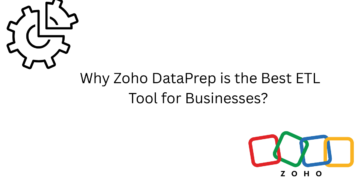In the rapidly evolving digital landscape, Generative AI has emerged as a transformative force across industries. At the core of this revolution are Large Language Models (LLMs), capable of generating human-like text, translating languages, summarizing data, and even writing code. Businesses are now racing to harness this power—not just in experimental phases but in production-ready workflows.
To operationalize LLMs effectively, enterprises need platforms that are scalable, secure, and deeply integrated with their data ecosystems. This is where Snowflake, a leading cloud-based data platform, becomes an enabler. Snowflake provides the flexibility, scalability, and performance required to deploy generative AI solutions at scale.
What is Generative AI?
Generative AI refers to algorithms that can create new content—text, images, audio, and more—based on training data. LLMs like GPT-4, Claude, and Mistral are prime examples. These models are trained on vast corpora and are designed to understand context, syntax, and semantics, enabling them to produce coherent, context-aware outputs.
Key Applications of Generative AI:
- Automated content creation (blogs, marketing copy)
- Customer support via AI-powered chatbots
- Real-time language translation
- Intelligent coding assistants
- Data summarization and analysis
The Need for Operationalizing LLMs
While the capabilities of LLMs are remarkable, the real challenge lies in operationalizing them—embedding them into real-world workflows and ensuring they consistently deliver business value.
Why Operationalization Matters:
- Scalability: Models need to serve multiple users simultaneously without latency.
- Monitoring & Governance: Compliance, ethical usage, and performance tracking are critical.
- Cost Management: Running large models can be resource-intensive; operationalization ensures efficiency.
- Integration: LLMs must interact seamlessly with internal systems, data lakes, and apps.
Snowflake: The Ideal Platform for AI Operationalization
Snowflake is more than just a data warehouse. It’s a unified data platform that brings together data storage, processing, and analytics in a scalable cloud-native architecture.
Why Snowflake is a Natural Fit for Generative AI:
- Native support for Python via Snowpark
- Access to third-party LLMs through Snowflake Marketplace
- Streamlined data pipelines and sharing
- Secure data governance and compliance tools
- Seamless integration with cloud ecosystems (AWS, Azure, GCP)
By building and deploying LLM-driven workflows directly within Snowflake, businesses eliminate the friction traditionally associated with moving data between tools.
Architecture Overview: Operationalizing LLMs on Snowflake
Let’s walk through a high-level architecture for deploying generative AI within Snowflake.
1. Data Ingestion
- Use Snowpipe to stream real-time data
- Ingest structured, semi-structured (JSON, XML), and unstructured data
2. Data Preparation
- Clean and transform data using SQL or Snowpark Python APIs
- Perform feature engineering for training or fine-tuning models
3. Model Integration
- Access pre-trained LLMs via Snowflake Marketplace or APIs (like OpenAI, Cohere)
- Optionally fine-tune models using custom datasets
4. Workflow Orchestration
- Use Tasks and Streams to create trigger-based pipelines
- Integrate model outputs into dashboards or applications via external functions
5. Monitoring & Optimization
- Log model usage and performance with Snowflake’s native observability tools
- Optimize queries and pipelines for cost and latency
Practical Use Cases: Generative AI in Action with Snowflake
1. Automated Customer Insights
Using Snowflake’s real-time data pipelines, LLMs can:
- Summarize customer feedback from multiple sources
- Generate sentiment analysis reports
- Offer suggestions for product improvements
2. AI-Augmented Business Intelligence
LLMs integrated with Snowflake can enhance dashboards by:
- Explaining trends in plain language
- Forecasting metrics with contextual explanations
- Answering business queries with conversational AI
3. Personalized Marketing Content
With Snowflake’s unified customer profile and LLMs:
- Generate tailored email copy and subject lines
- Create content variations for A/B testing
- Suggest next-best actions for each customer segment
4. Intelligent Document Processing
Leverage Snowflake’s support for unstructured data and LLMs to:
- Parse contracts and extract key terms
- Classify documents
- Summarize lengthy PDFs or reports
How Snowpark Accelerates LLM Workflows
Snowpark is Snowflake’s developer framework that enables building pipelines and ML models in Python, Java, and Scala—directly within Snowflake.
Benefits of Using Snowpark:
- No data movement: Code executes where data lives
- Secure execution environments: Maintain compliance with sensitive data
- Integrated model deployment: Easily invoke models as UDFs or external functions
Governance and Security Considerations
Operationalizing LLMs at scale brings governance challenges:
- Data privacy: Ensure models don’t leak or memorize sensitive info
- Auditability: Track who accessed what data, and when
- Model explainability: Understand why a model made a specific decision
- Bias mitigation: Monitor outputs for fairness and compliance
Snowflake addresses these concerns with:
- Row- and column-level security
- Data masking and tokenization
- Usage monitoring
- Access controls and RBAC policies
Building a Center of Excellence (CoE) for Generative AI
To sustainably scale LLMs, many organizations are establishing an AI Center of Excellence (CoE).
A CoE typically provides:
- Guidelines for prompt engineering and fine-tuning
- Reusable LLM assets (e.g., templates, pipelines)
- Model evaluation frameworks
- Training and knowledge sharing
With Snowflake as the foundational platform, a CoE can ensure consistency and best practices across departments.
Key Considerations for Success
When operationalizing LLMs using Snowflake, keep these best practices in mind:
Technical Considerations
- Choose between embedding LLMs as UDFs or calling external APIs
- Optimize data access patterns to reduce latency
- Monitor cost usage especially when invoking third-party LLMs
Organizational Considerations
- Define clear KPIs and ROI metrics for AI initiatives
- Promote cross-functional collaboration between data, product, and compliance teams
- Implement continuous training for teams to stay up-to-date
Future Trends: What’s Next?
As generative AI matures, Snowflake continues to evolve to support cutting-edge use cases.
Trends to Watch:
- Embedded vector search for retrieval-augmented generation (RAG)
- Private LLM hosting within Snowflake VPCs
- Real-time interaction models via Snowflake Native Apps
- Enhanced multi-modal support (text, images, code)
Snowflake’s open architecture and expanding ecosystem make it a future-proof choice for any enterprise AI strategy.
Conclusion: Your Path to AI-Driven Transformation
The journey from experimentation to enterprise-grade AI depends on the ability to operationalize LLMs efficiently and securely. By leveraging Snowflake’s modern data platform, businesses can not only accelerate the deployment of generative AI solutions but also ensure scalability, governance, and performance.
With Snowflake, the future of AI is not just possible—it’s already happening.


























